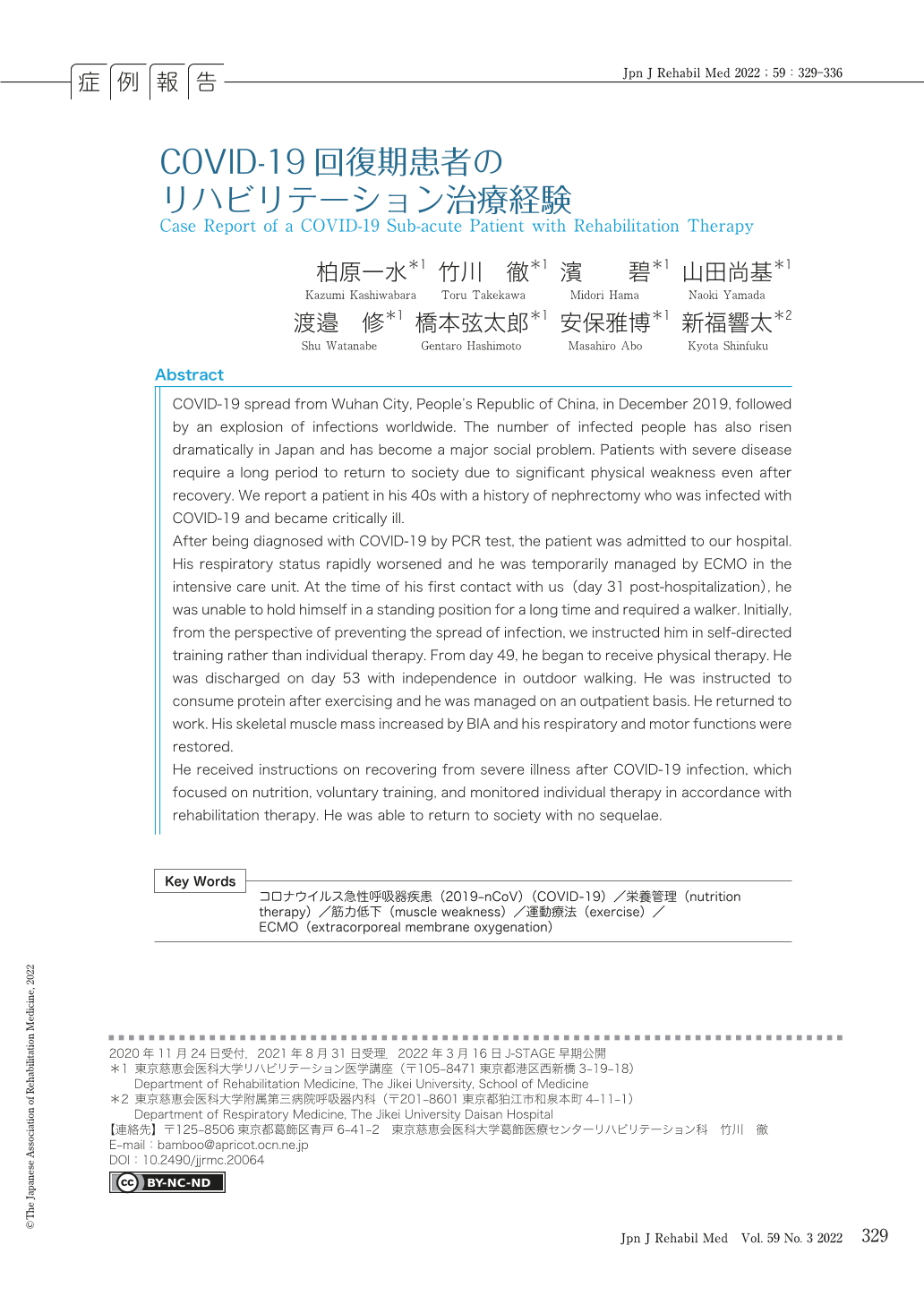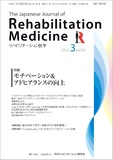Japanese
English
- 販売していません
- Abstract 文献概要
- 1ページ目 Look Inside
- 参考文献 Reference
はじめに
2019年12月,コロナウイルスの変異から中華人民共和国武漢市で広まったSARS-CoV-2ウイルス感染症(COVID-19)は,後に全世界へと爆発的に広まった.わが国では最初の肺炎患者が2020年1月14日に報告されて以降,検査陽性者数は増加し2月20日には国内最初の死亡例が確認された.院内集団感染も散見され,患者の増加に伴う医療機関の逼迫状況を受け,自治体首長らからの相次ぐ外出自粛要請と4月7日に発出された緊急事態宣言により,5月中旬頃にいったんは新規の検査陽性者数はほぼ収束した.その後再び検査陽性者数は増加しているが,20歳代をピークに20〜50歳代に多く,一方死亡例の大半は高齢者が占めている.
当時,医療機関が逼迫していた原因として,患者数の急激な増加はもとより,患者1人あたりにより多くの医療資源が消費されることが挙げられる.一部の患者では急激に重症化する場合があり軽症者も多くが入院していたこと,より厳格な院内感染防止対策を要求される一方,対策に必要な物資の供給が不足していたこと,陰性確認後の退院判断が慎重であったことなどに加えて,重症から回復した患者では体力低下が著しく,退院可能となるまでに期間を要することも大きい.
COVID-19から回復した患者に対するリハビリテーション治療を実施し,生体電気インピーダンス分析(bioelectrical impedance analysis:BIA法)による骨格筋量を評価した詳細な経過報告は,国内外の文献でわれわれが渉猟し得た範囲では存在しない.今回,COVID-19と診断され重症化した後に回復した患者に対して,感染防止対策をしたうえで対人療法であるリハビリテーション治療を実施し,外来で経過観察し復職した症例を経験したので報告する.なお,本症例報告については患者本人よりあらかじめ文書で同意を得ている.
COVID-19 spread from Wuhan City, People's Republic of China, in December 2019, followed by an explosion of infections worldwide. The number of infected people has also risen dramatically in Japan and has become a major social problem. Patients with severe disease require a long period to return to society due to significant physical weakness even after recovery. We report a patient in his 40s with a history of nephrectomy who was infected with COVID-19 and became critically ill.
After being diagnosed with COVID-19 by PCR test, the patient was admitted to our hospital. His respiratory status rapidly worsened and he was temporarily managed by ECMO in the intensive care unit. At the time of his first contact with us (day 31 post-hospitalization), he was unable to hold himself in a standing position for a long time and required a walker. Initially, from the perspective of preventing the spread of infection, we instructed him in self-directed training rather than individual therapy. From day 49, he began to receive physical therapy. He was discharged on day 53 with independence in outdoor walking. He was instructed to consume protein after exercising and he was managed on an outpatient basis. He returned to work. His skeletal muscle mass increased by BIA and his respiratory and motor functions were restored.
He received instructions on recovering from severe illness after COVID-19 infection, which focused on nutrition, voluntary training, and monitored individual therapy in accordance with rehabilitation therapy. He was able to return to society with no sequelae.

Copyright © 2022, The Japanese Association of Rehabilitation Medicine. All rights reserved.


